Frequently asked questions
What is chordioxide ?
Chlorine dioxide (ClO₂) is a very effective disinfectant against microorganisms, it is also more environmentally friendly compared to chlorine, see other question below for comparison.
Is chlorine dioxide and chlorine the same thing ?
NO!
Chlorine dioxide (the active ingredient in ALL Xinix products:
- Chlorine dioxide (ClO₂) is a compound, that is, a substance formed by combining two or more different elements.
- You drink NO chemicals! (just a small amount of salt)
- Inactivates ALL viruses, bacteria and fungi (t.ex. E. coli, Salmonella, Legionella, SARS-Covid).
- Disables all naked viruses.
- Leaves no taste in the water.
- Low toxicity.
- Leaves no harmful chlorinated organic by-products.
- Very effective at different pH levels.
- Does not cause any harmful organic by-products.
- Low dosage is sufficient.
- Used as a pure component and leaves no isocyanuric acid.
- Kills harmful protozoa, such as Cryptosporidium.
- Shelf life: 1-component solution 2 years, 2-component solution 8 years.
Chlorine
- Chlorine (Cl₂) is an element, that is, a pure substance consisting of only one type of atom.
- Leaves carcinogenic byproducts in the water (trihalomethanes).
- Leaves a strong bad taste – young children may refuse to drink.
- Gives a strong chlorine smell (like in swimming pools).
- Effectiveness is affected by pH levels.
- Causes carcinogenic trihalomethanes (THMs).
- Chlorinates organic material (t.ex. meat).
- Requires a relatively high dosage.
- Chlorine-generating tablets accumulate isocyanuric acid in the water.
- Some protozoa (Cryptosporidium) are very resistant to chlorine.
What is hypochlooric acid/hypochlorite that is included in the table of contents on so many disinfectant products ?
Hypochlorous acid and hypochlorite are formed when chlorine is dissolved in water. In alkaline solutions (pH above 7), most of the chlorine is converted to hypochlorous acid or hypochlorite. Hypochlorites are salts of hypochlorous acid. The ratio between the two also depends on the pH. For example, sodium hypochlorite is often sold in aqueous solution as “chlorine” or “household bleach.”
Hypochlorous acid (HOCl) is formed from chlorine and water according to the following reaction:
Cl₂ + H₂O → HCl + HOCl
Properties such as side effects, risks and effectiveness are compiled in our comparison table under the heading "chlorine".
What is an element and what is an association ?
The difference between a compound and one element is like the difference between a recipe and one single ingredient:
- Element: It is a pure substance made up of only one type of atom. Think of it as a basic building block. For example, chlorine (Cl) an element, just like oxygen (O), hydrogen (H), and gold (Au). Each element has its own type of atom and cannot be broken down into something simpler.
- Compound: It is a substance that is formed by combine two or more different elements. It's like mixing ingredients to create a new dish. A compound has different properties than the elements it is made of. For example, chlorine dioxide (ClO₂) a compound because it is made of a chlorine atom and two oxygen atomsWhen these are combined, a new substance is formed with special properties that differ from just chlorine or oxygen alone.
So, while a element is like an individual Lego piece, is a compound like building something new with several different Lego pieces together!
Is chlorine dioxide approved for water disinfection ?
Chlorine dioxide is approved within the EU and by the Swedish Food Agency and recommended by the United States Environmental Protection Agency (USEPA) as a disinfection additive for drinking water, to replace chlorine (which gives rise to carcinogenic by-products).
In which areas can you use your products ?
We are proud to include this list - as you can see, there is a use for our products in most areas:
BOATS & YACHTS
• Water system cleaning: Disinfection of water tanks and kitchen areas.
• Surface cleaning: Cleaning of decks and prevention of mold and algae formation.
• Disinfection of leisure areas: Disinfection of leisure spaces on board.
CAMPING & HIKING
• Water disinfection: Disinfection of water from natural sources (rivers,
lakes).
• Equipment cleaning: Cleaning of camping equipment, tools and
water container.
• Safe drinking water: Ensuring safe drinking water during
outdoor activities.
• Cleaning of outdoor areas: Cleaning of outdoor areas, such as picnic tables.
CATERING & FOOD&
• Disinfection of kitchenware: Disinfection of kitchenware and utensils.
• Product cleaning: Cleaning and disinfection of fruit, vegetables, meat and
other raw materials.
• Surface cleaning: Disinfection of food preparation surfaces and storage areas.
• Disinfection of processing equipment: Disinfection of equipment for
meat, seafood and poultry.
PROPERTY MANAGEMENT
• Disinfection of office equipment: Disinfection of keyboards, desks
and office furniture.
• Surface cleaning: Cleaning door handles, chairs and other high-contact surfaces
at the office.
• Sanitization of common areas: Disinfection of shared equipment and
common spaces.
• Cleaning of toilets and elevators: Disinfection of toilets and elevators in
office buildings.
PISCICULTURE & AQUACULTURE
• Tank cleaning: Disinfection of fish farming tanks and aquaculture systems.
• Biofilm removal: Removal of biofilm from water pipes and tanks.
• Cleaning of processing facilities: Ensuring clean water in
fish processing plants.
FLIGHT
• Water system disinfection: Disinfection of water tanks, pipes and hoses.
• Interior surface cleaning: Disinfection of surfaces inside aircraft.
• Nozzle cleaning: Disinfection of nozzles in aircraft.
• Air conditioning: Disinfection of air conditioning systems in aircraft.
• Surface cleaning: Disinfection of water tanks, interior surfaces and other
components in aircraft.
HOME
• Drinking water: Disinfection of drinking water when tap water is not safe.
• Surface cleaning: Cleaning and disinfection of kitchen surfaces, bathrooms and other
home environments.
• Biofilm removal: Removal of biofilm from water pipes and
storage tanks.
• High-contact areas: Disinfection of high-contact areas, such as
door handles and switches.
HOTEL
• Cleaning of contact points: Cleaning of door handles and other high-touch surfaces
contact.
• Kitchen cleaning: Disinfection of kitchen equipment, countertops and utensils.
• Cleaning of bathrooms and showers: Disinfection of bathrooms and showers.
• Cleaning of public areas: Cleaning of floors and common areas such as the lobby and restaurants.
CARAVANS & MOBILE HOMES
• Disinfection of water tanks: Cleaning and disinfection of water tanks.
• Surface cleaning: Cleaning of kitchen and bathroom surfaces.
• Cleaning of compact areas: Disinfection of small spaces and
air conditioning units.
DISASTER- & AID ORGANIZATIONS
• Water purification in crisis areas: Ensuring clean drinking water in
crisis areas.
• Emergency sanitation: Ensuring sanitation and clean water in
disaster and emergency situations.
• Disinfection of temporary protection: Cleaning and disinfection of
temporary shelters, aid centers and common spaces.
PUBLIC TRANSPORT
• Disinfection of seats and handrails: Disinfection of seats, handrails and other
surfaces.
• Sanitization of touch points: Cleaning of ticket machines, door handles and
other high-contact surfaces.
• Cleaning of air conditioning systems: Disinfection of
air conditioning systems in buses, trains and trams.
• Cleaning of stations and waiting areas: Disinfection of waiting areas and
stations.
MUNICIPAL WATER
• Purification of public water systems: Purification processes for public
water system.
• Sewage treatment: Disinfection of sewage systems.
• Biofilm Removal: Removal of biofilm from public
water distribution system.
CRUISE SHIP & TANKER
• Water systems on board: Disinfection of water systems on board cruise ships
and tankers.
• Cleaning of common areas: Cleaning of common areas, kitchen,
bathrooms, pools and spas.
• Air conditioning: Disinfection of air conditioning systems.
• Biofilm removal: Removal of biofilm in onboard water systems.
DRUG & BIOTECHNOLOGY
• Laboratory disinfection: Disinfection of laboratories and clean rooms.
• Sterilization of equipment: Sterilization of
pharmaceutical production equipment.
• Sterile environment: Ensuring sterile environments in
pharmaceutical production facilities.
MILITARY
• Water purification in the field: Ensuring clean drinking water in the field.
• Field hospital decontamination: Disinfection of field hospitals and military equipment.
• Disinfection of military equipment: Disinfection of military transport and
equipment.
• Water purification during operations: Disinfection of water supplies in operation areas.
POOLS & SPA
• Pool water disinfection: Disinfection of pool water to ensure
security.
• Biofilm removal: Removal of biofilm from pool walls, pipes and
shower areas.
• Spa disinfection: Disinfection of spa and sauna areas.
• Filtration system maintenance: Prevention of bacterial growth in
pool filtration system.
RESTAURANTS
• Kitchen cleaning: Cleaning of kitchen counters, floors and surfaces.
• Disinfection of tools and equipment: Disinfection of tools and
kitchen-ware.
• Cleaning of dining rooms: Cleaning of public dining rooms, tables and chairs.
• Refrigerator cleaning: Disinfection of refrigerators and food storage areas.
SCHOOLS & PRESCHOOLS
• Disinfection of toys and surfaces: Disinfection of toys, pacifiers and child-friendly surfaces.
• Hand and surface cleaning: Disinfection of hands and surfaces in classrooms and play areas.
• Classroom cleaning: Cleaning of classrooms, playrooms and common areas.
• Bathroom disinfection: Cleaning of bathrooms and shared spaces for children.
HOSPITAL
• Disinfection of medical instruments: Disinfection of medical
instruments as surgical tools.
• Cleaning of operating rooms: Cleaning and disinfection of operating tables and
other surfaces in patient rooms.
• Disinfection of protective equipment: Cleaning of gloves and protective equipment
to eliminate pathogens.
• Surface cleaning: Disinfection of floors, corridors and other high-traffic surfaces
contact.
• Disinfection of patient rooms: Cleaning of patient rooms, waiting rooms and common areas
spaces.
• Air conditioning: Disinfection of ventilation and cooling systems to
prevent the spread of airborne diseases.
• Removal of biofilm in water systems: Cleaning of water pipes to
eliminate biofilm and prevent the growth of bacteria.
SPORTS FACILITIES
• Cleaning of gym equipment: Disinfection of gym equipment and training surfaces.
• Locker room cleaning: Cleaning and disinfection of locker rooms
and showers.
• Disinfection of touch points: Cleaning of benches, mats, weights and
other surfaces that are frequently touched.
WATER SYSTEM
• Disinfection of water tanks: Cleaning and disinfection of water tanks
and reservoirs.
• Cleaning of pipes and hoses: Disinfection of pipes, hoses and
water storage system.
• Biofilm removal: Biofilm removal to ensure safe
water flow.
VETERINARY CLINIC
• Disinfection of animal cages: Disinfection of animal cages and
livestock areas.
• Sterilization of veterinary equipment: Sterilization of veterinary instruments
and equipment.
• Cleaning of clinic surfaces: Cleaning of floors, examination tables and other surfaces
in clinics.
ADVENTURE & EXPEDITIONS
• Water purification: Ensuring clean drinking water in extreme environments.
• Disinfection of tools and equipment: Disinfection of tools, equipment
and camping equipment.
• Water purification in remote areas: Water purification in remote areas (deserts,
mountains, forests).
What makes Xinix unique ?
Xinix has succeeded in stabilizing a GAS, chlorine dioxide (ClO2), into LIQUID form - something previously considered impossible.
Xinix FreeBact Water & Surface 1-K, i.e. our 1-component product, is unique as it has a very long shelf life: 2 years, when stored cool and dark. Once opened, the bottle will last 30 days. Our ready-mixed 1-K product can be used immediately.
Also Xinix FreeBact Water 2-K, i.e. our 2-component products, also have an unusually long shelf life: 8 years and should be used within 24 hours after mixing.
Against which microorganisms are chlorine dioxide effective ?
ALL. Even with minimal contact time, chlorine dioxide is very effective against disease-causing organisms t.ex. Legionella, Listeria, Salmonella, amoeba cysts, Giardia cysts, E. Coli, and Cryptosporidium. Since chlorine dioxide destroys biofilm, bacterial regrowth is also prevented.
Are xinix products as effective as chlorine ?
FreeBact® Water does not affect the smell or taste of the water and is approx. 5 times as effective as chlorine-based products. Our products do not form bound chlorine compounds/trihalomethanes, as chlorine-based products do (these are considered carcinogenic).
How can I know that your products really work ?
XINIX has more than 46 scientific studies and tests from world-leading universities and laboratories such as Clancy, Johns Hopkins, London Medical School, Singapore University, Michigan State University, etc.
6 EN* standards. A safe disinfection method to eliminate spore-forming bacteria.
Ongoing ISO certifications and additional EN tests.
* EN = European standards are an expression of requirements for products, processes or services to meet the requirement of fitness for a particular purpose, read more here.
How much water is Xinix products to ?
There are products for every need; our smallest bottle is enough for 15 liters and our largest for 10 m3 of water. Then we also have dosing solutions, i.e. continuous dosing into water systems.
How long does Xinix-treated drinking water stay, ie free of bacteria and drinkable ?
If the water container is closed with a lid and not opened, the water remains disinfected.
As soon as you open the lid, a new process of contamination (which is everywhere) begins. The disinfection with our products is instantaneous, meaning there is no long-term effect. How long the water stays drinkable therefore depends on the tank it is stored in and how it is sealed.
It is advantageous to disinfect the water only at the time it is to be used, as it is quick and leaves no taste or odor. Xinix products also do not leave harmful residues, which chlorine-based products do. The only residue is barely measurable common salt.
Some water in wells has plenty of healthy minerals, but usually gets bacteria. When adding Xinix, the minerals also disappear or do they remain ?
No, Xinix products DO NOT remove minerals from the water.
If it is harmful to drink Xinix undiluted, for example if a child accidentally gets over a bottle and drink it ? it is harmful if you happen to overdose ?
No. Use our products only according to the instructions on the packaging and for the described purpose.
When ingesting 1-K product:
There is no danger of overdose. If a larger volume is ingested, drink water and contact a doctor.
When ingesting 2-K product:
Drink water and contact a doctor.
What are the requirements of authorities in Sweden ?
In Sweden, chlorine dioxide is a drinking water additive approved by the Swedish National Food Agency.
Why does it say on WHO's website that Xinix products are not approved ?
WHO page refers to an old test from 2019 of a product called AquaCare, manufactured by a former Xinix company that no longer exists. Since then, we have developed and improved our products significantly. We have hired a PhD in chemistry, Dr. Robert Heinrich, who has refined our formula. Our current products – Xinix FreeBact® Water & Surface – is the result of this development and has been tested according to modern standards.
The WHO testing procedure requires samples to be stored at room temperature for up to six months before testing, which is not optimal for our product. Additionally, the 2019 test used a dosage that was too low. We have contacted WHO several times to have the old information removed, but to no avail. We plan to submit our improved products for testing once we can ensure they are stored and used according to our guidelines.
More information is available here: xinix.se/pages/who
How it goes with the intestinal flora if you drink it over time, ie all good bacteria are eliminated at the same time ?
Our products do not affect the intestinal flora at all. The great thing about them is that you are NOT drinking any chemicals at all.
Simply put, chlorine dioxide reacts with the microorganisms in the water, but then the active substance as such is consumed.
The only residue you have left is barely measurable amounts of salt. This is in contrast to chlorine, which you dissolve in the water and then consume.
May the fluid happen to return to explosive gas ?
NO.
In the process we use, our ready-mixed product is 99.85% water, and our 2-K product cannot form explosive gas.
What do the products have for concentration ?
2-K the products (two-component) have &<7% for sodium chlorite and &<9% for the hydrochloric acid solution. These concentrations are printed on the labels.
There is no simple answer for 1-K the products (single component): Chlorine dioxide is a so-called "radical". As such, the product cannot continuously maintain a constant concentration. The expiration date is the important value here. The product will perform its task when used within the expiration date and according to the instructions. Chlorine dioxide is an effective disinfectant, which can eliminate a wide variety of bacteria down to very low concentrations.
During manufacturing, the product may also end up at other levels of concentrations.
Are chlorites and chlorates formed with FreeBact® Water Dosage
FreeBact® Water Dosage is based on a closed two-component system where chlorine dioxide is generated in very small volumes directly in a reactor that is integrated into the plant. It is therefore not produced in bulk and is not stored, which eliminates the risks of explosivity or leakage. The system is designed for safe operation in properties and swimming pools, with built-in barriers and controls that ensure the correct dosage. Differences between by-products at chlorine (Cl₂) and chlorine dioxide (ClO₂):
- When using chlorine (t.ex. sodium hypochlorite or chlorine gas) there is a clear risk of formation of chlorate (ClO₃⁻), especially when storing hypochlorite solutions over time. In addition, chlorine can react with organic matter and ammonium in the water and form unwanted by-products such as trihalomethanes (THMs) and other chlorinated organic compounds.
- When using chlorine dioxide is mainly formed chlorite (ClO₂⁻) and to a lesser extent chlorate, but in significantly lower levels than with chlorinationChlorine dioxide does not give rise to trihalomethanes or other chlorinated organic by-products. With correct control and dosage, the levels of chlorite and chlorate are well below international guideline values.
Please note that our product is made from high-quality raw chemicals with very high purity and that we do not produce chlorine dioxide gas at all. In our closed system, small amounts of solution are generated directly in the reactor on site – never gaseous chlorine dioxide – making the process both safe and controlled.


